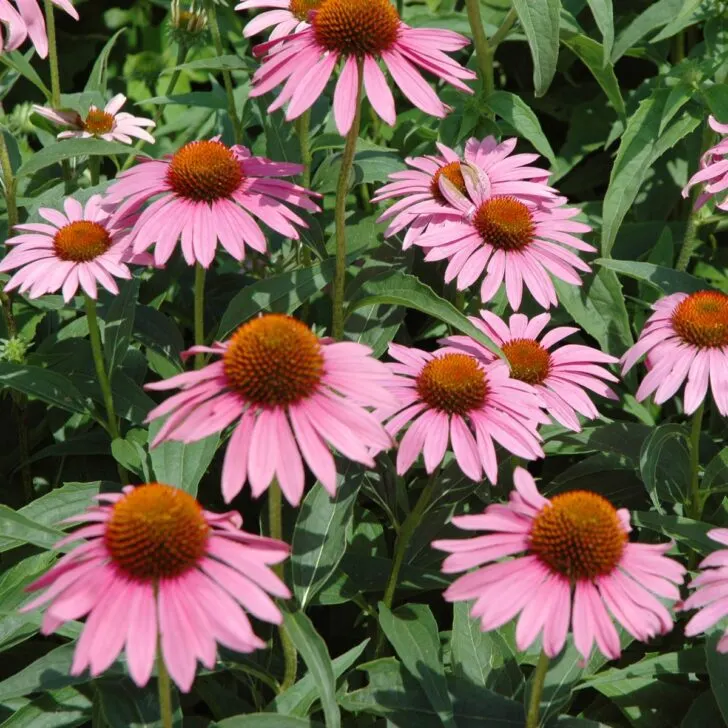Learn to grow astilbe from seed with this simple winter sowing method, and fill your shade garden with lots of these feathery perennials.

Astilbe is a perennial flowering plant known for its feathery, plume-like flowers and fern-like foliage. It thrives in moist, well-drained soil and partial to full shade, making it an ideal choice for woodland gardens or shaded borders.
I have a lot of shady spots in my garden, and I'm always looking for ways to fill the space with color. But full-grown astilbe plants are expensive! Just one pot can set you back $10-15 or more at the nursery!
This year, I'm growing astilbe from seed instead. It may take longer to see those feathery plumes, but I can fill all those empty spaces now for a fraction of the price!
What do astilbe seeds look like?
Astilbe seeds are tiny, black flecks that can be difficult to handle individually. That's another reason why I love the winter sowing method for astilbe. You can just sprinkle them over the soil rather than trying to place them into individual cells!

Winter sowing astilbe seeds
It might sound counterintuitive, but winter sowing is a nifty little gardening hack I learned that aligns with the natural germination process of many perennials.
By using translucent milk jugs as mini greenhouses, you can expose your seeds to a period of cold stratification. Once the warmth of spring creeps in, the seeds start to germinate!
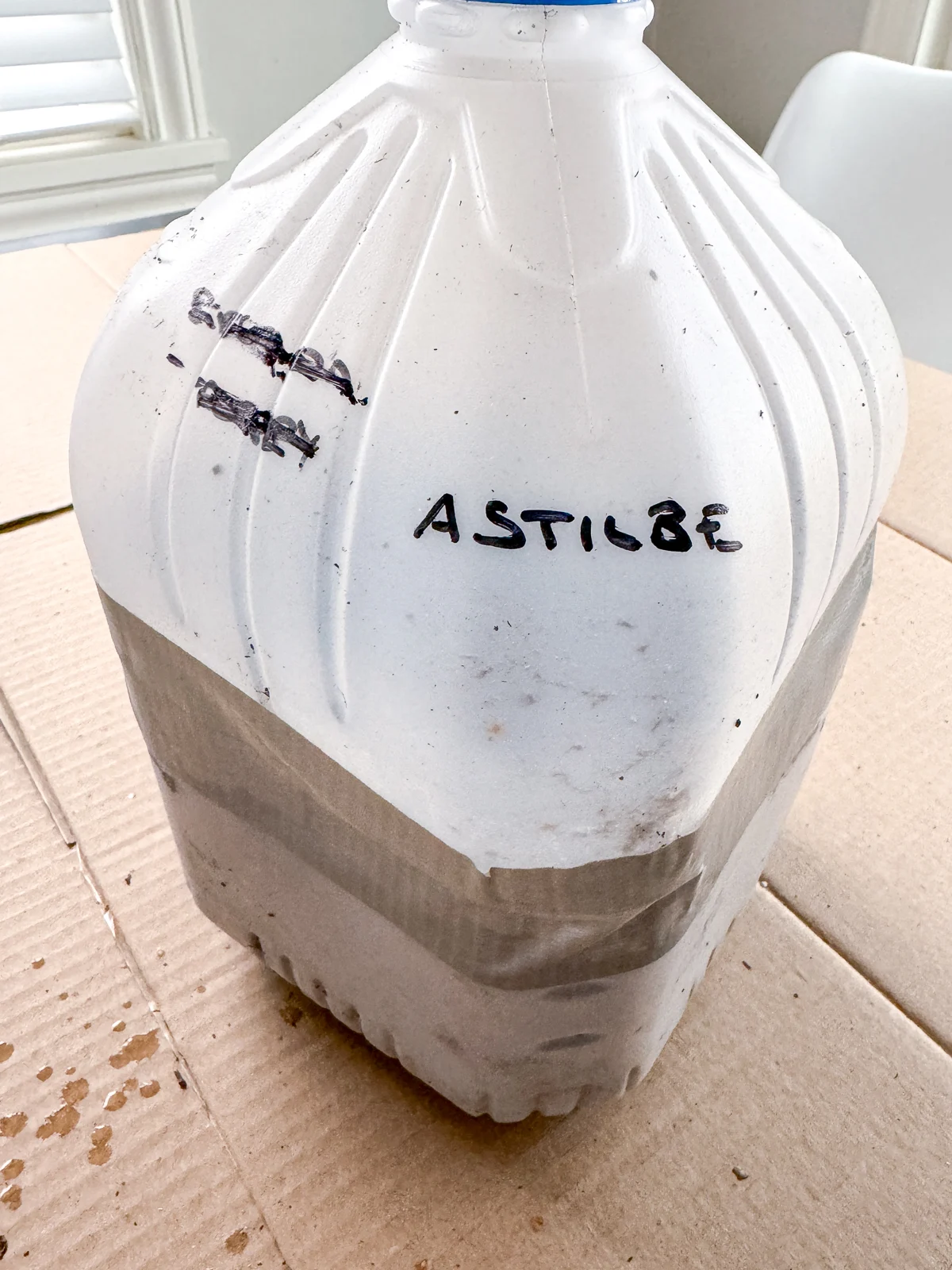
This simple method takes the guesswork out of timing and temperature regulation for seed germination of many perennial plants. The natural cycle dictates the pace, and the seedlings emerge when they are good and ready.
Prepare your milk jugs. Start by cleaning out empty milk jugs thoroughly to remove any residues. Then, using a sharp knife or scissors, cut horizontally around the jug just below the handle, leaving a small section uncut to act as a hinge.

Create drainage holes. Poke several holes in the bottom of the jug for drainage. This helps prevent water logging, which can be detrimental to seed germination and seedling health.
Add soil mix. Fill the bottom half of your jug with a good quality potting mix. Moisten the mix so it's damp but not soaked, ensuring it's ready for the seeds.
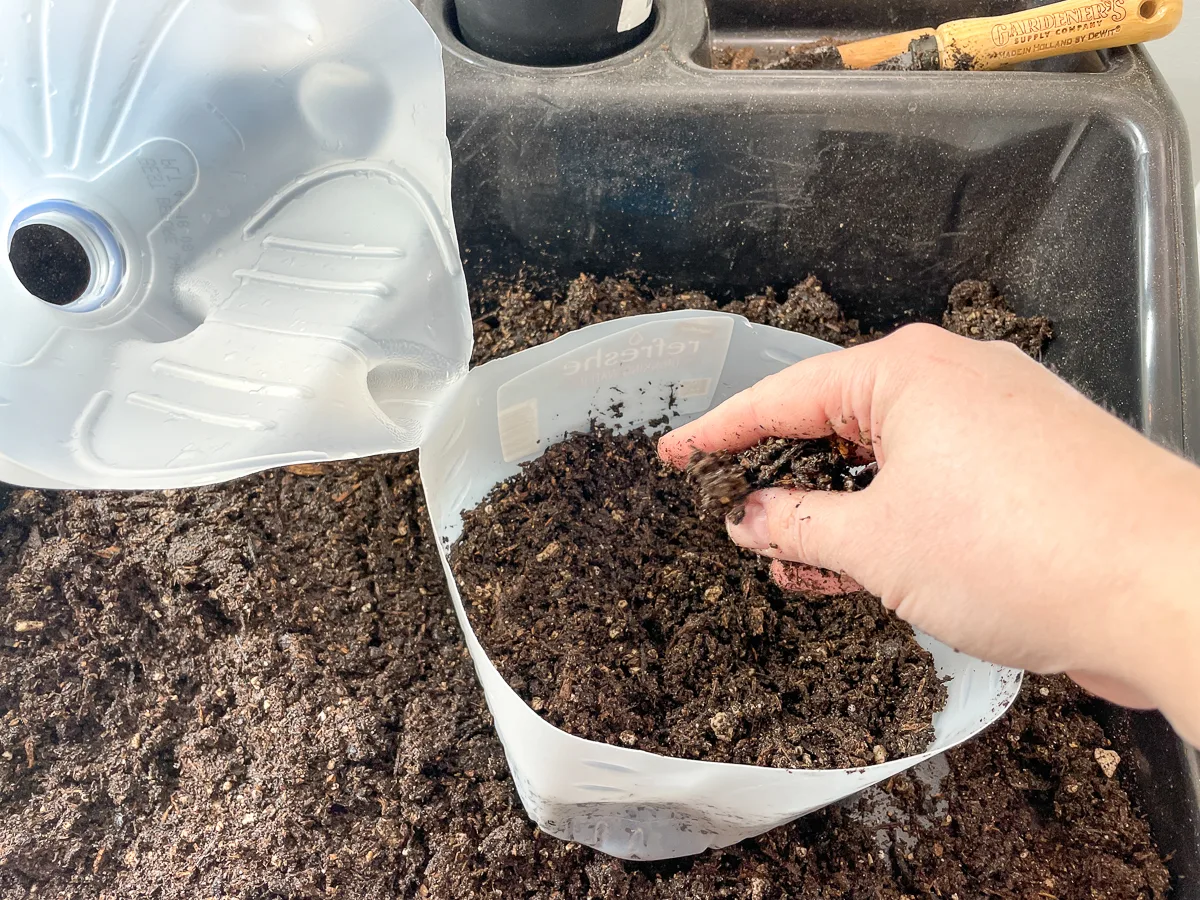
Sow the seeds. Sprinkle your astilbe seeds onto the surface of the moist soil. Astilbe seeds need light to germinate, so don't cover them.
Close and secure the jug. Tape the cut edges of your jug back together, leaving the cap off. The open top will allow for rain and snow to enter, keeping your seedlings watered naturally.

Label the jug. With a permanent marker, label the outside of the jug. I always stick a label into the soil before closing up the jug as well, just in case the marker wears off over the winter. You'd be surprised how easy it is to forget what you planted as time passes!

Place outdoors. Position your prepared milk jug in a sunny spot where it'll be exposed to the elements but not in danger of being disturbed by wind or animals.
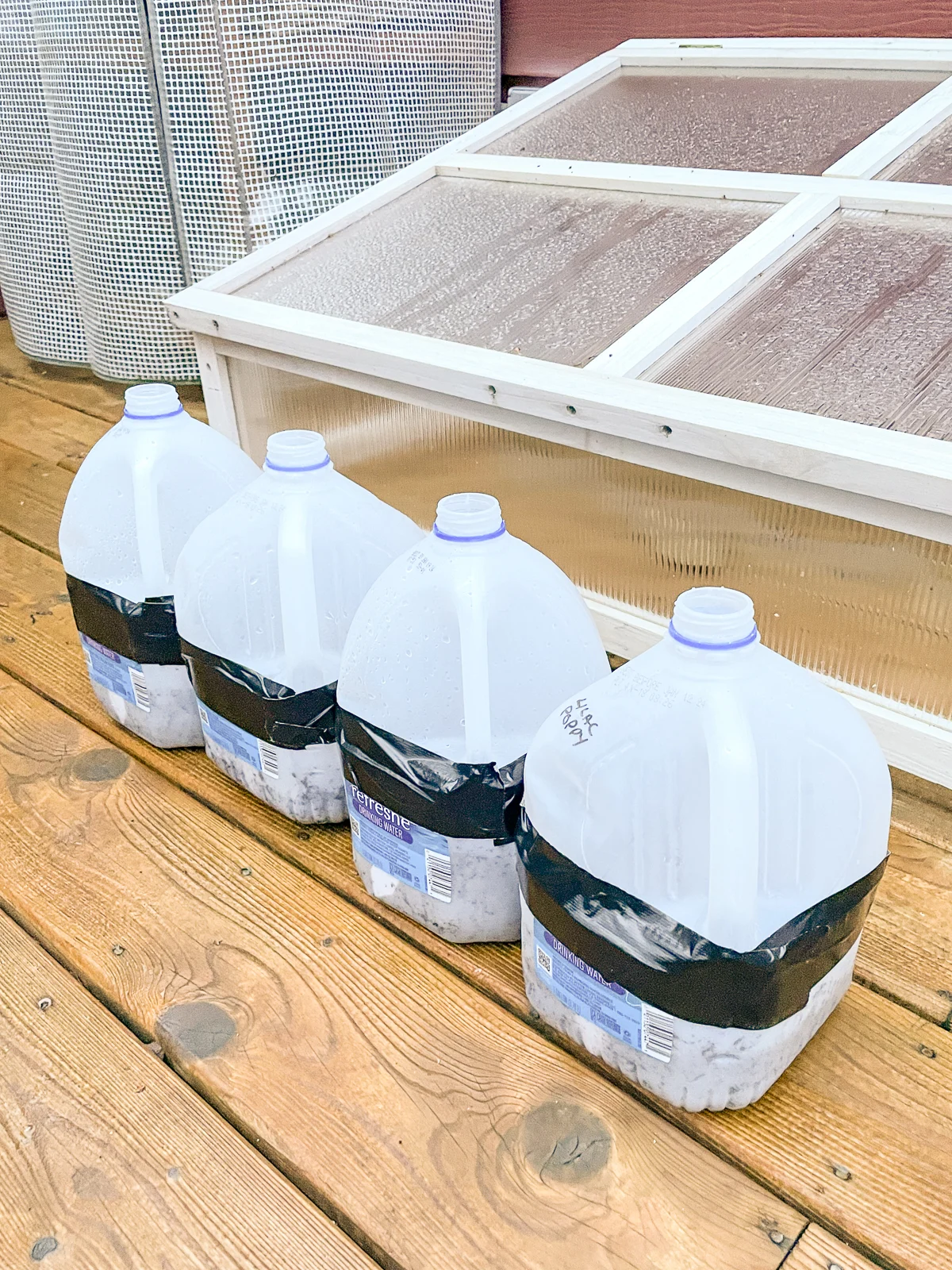
Monitor and wait. Nature takes over from here. As the temperatures fluctuate through the winter, the seeds will freeze and thaw, breaking their dormancy. Keep an eye on moisture levels and add water if the soil seems dry.
Let the air in. Once you notice seedlings sprouting in spring, it's time to gradually introduce them to the outside air. Start by opening the jugs during the day and closing them at night, and eventually remove the tops altogether after the seedlings have adjusted.
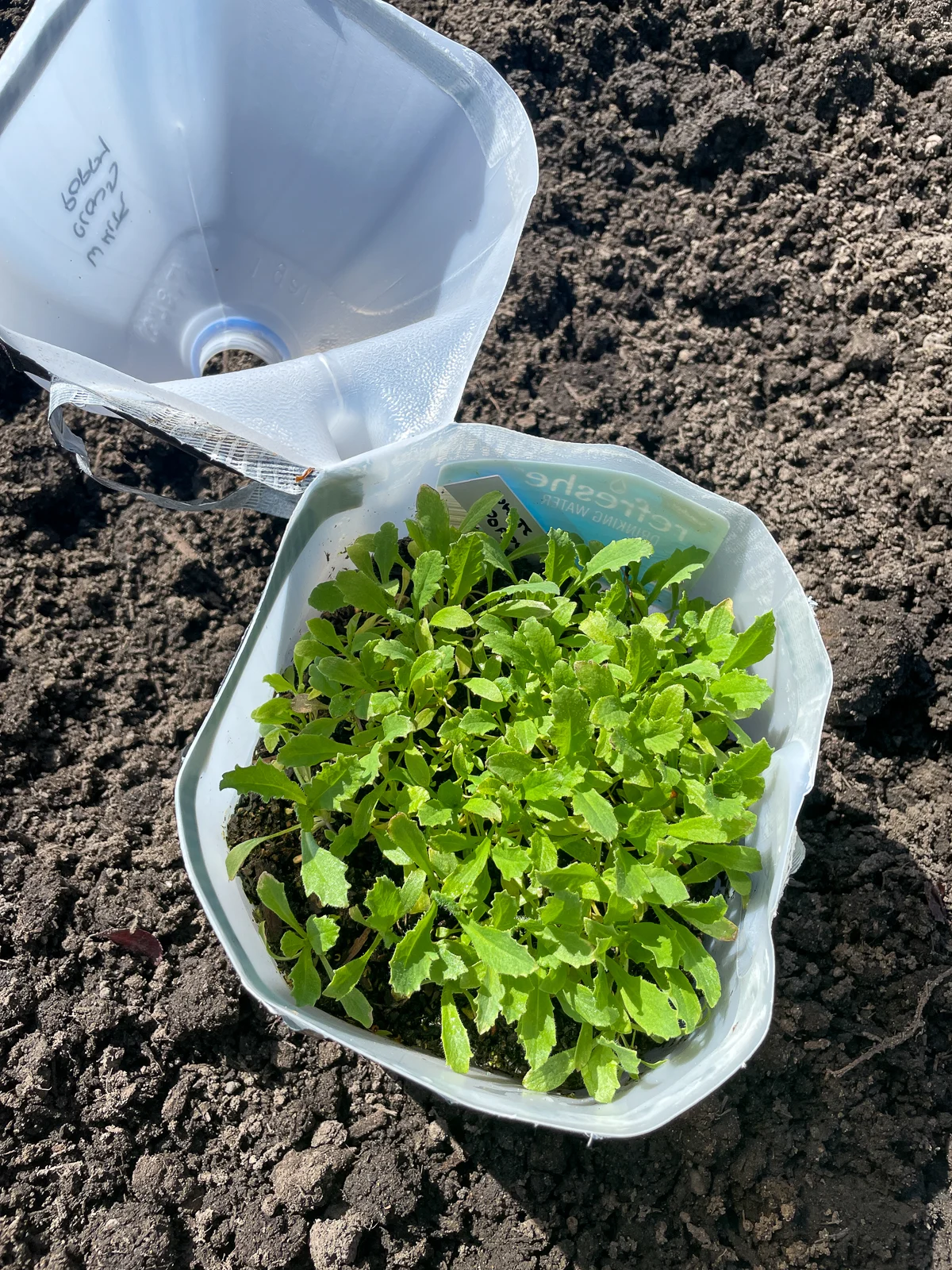
One benefit to winter sowing is that there's no need to harden off your seedlings before planting them out in the garden. They're already accustomed to the great outdoors, and are stronger than indoor sown seedlings. Just pop them into the garden whenever you're ready!
Check out these other seeds you can winter sow!

